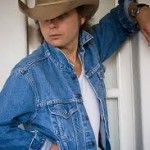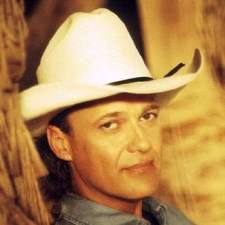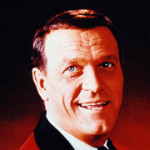
Ricky Van Shelton




CMA Awards: Entertainer of the Year (1967-2013)
Since its inception, the top honor an artist could be given at the Country Music Association awards is this one: Entertainer of the Year. Originally a revolving door of winners, the winner in early years was often not even nominated the following year. In 1981, Barbara Mandrell became the first artist to win the award twice. Alabama succeeded her with a three year run from 1982-1984. Fourteen years later, Garth Brooks became the first artist two win four times, a feat later matched by Kenny Chesney in 2008.
Here’s a look back at the award from the very beginning, along with some facts and feats about the category and its nominees.
- Bill Anderson
- Eddy Arnold
- Merle Haggard
- Sonny James
- Buck Owens
One year after being inducted into the Country Music Hall of Fame, Eddy Arnold was named the very first Entertainer of the Year at the inaugural CMA awards in 1967. Don’t assume it was a sympathy vote. Arnold had three #1 hits in the twelve months leading up to the ceremony, as he was in the middle of his impressive mid-sixties comeback, a period best defined by the 1965 classic, “Make the World Go Away.” He remains the only member of the Hall of Fame to win this award after being inducted.

100 Greatest Men: #46. Dwight Yoakam
 100 Greatest Men: The Complete List
100 Greatest Men: The Complete List
One of the strongest voices of the New Traditionalist movement, Dwight Yoakam revitalized the Bakersfield sound as he shot to stardom in 1986.

100 Greatest Men: #52. Keith Whitley
 100 Greatest Men: The Complete List
100 Greatest Men: The Complete List
Some of the greatest artists in country music left the scene just as they reached staggering artistic heights, leaving fans to forever wonder what might have been.

100 Greatest Men: #94. Ricky Van Shelton
 Ricky Van Shelton rose to superstardom in the late eighties, bringing his old traditionalist sound to the forefront of the new traditionalist movement.
Ricky Van Shelton rose to superstardom in the late eighties, bringing his old traditionalist sound to the forefront of the new traditionalist movement.
Born and raised in Virginia, Shelton enjoyed the traditional country music of the sixties, but also had a taste for the pop of the same era and the gospel sounds that he heard in church every Sunday. He would draw from all three genres in his recording career, but his heart was always in traditional country music.
After playing in a band with his brother, he followed his girlfriend to Nashville in 1984. He played in nightclubs for a short time before being discovered by a local journalist. The media exposure led him to a deal with Columbia Records.

400 Greatest Singles of the Nineties: #200-#176
The hits come from all over the place here. Breakthrough hits from Trace Adkins and Carlene Carter join one-hit wonders Brother Phelps and George Ducas. And alongside crafty covers of songs by sixties rock band The Searchers and nineties country artist Joy Lynn White, you can also find tracks from three diamond-selling country albums.



